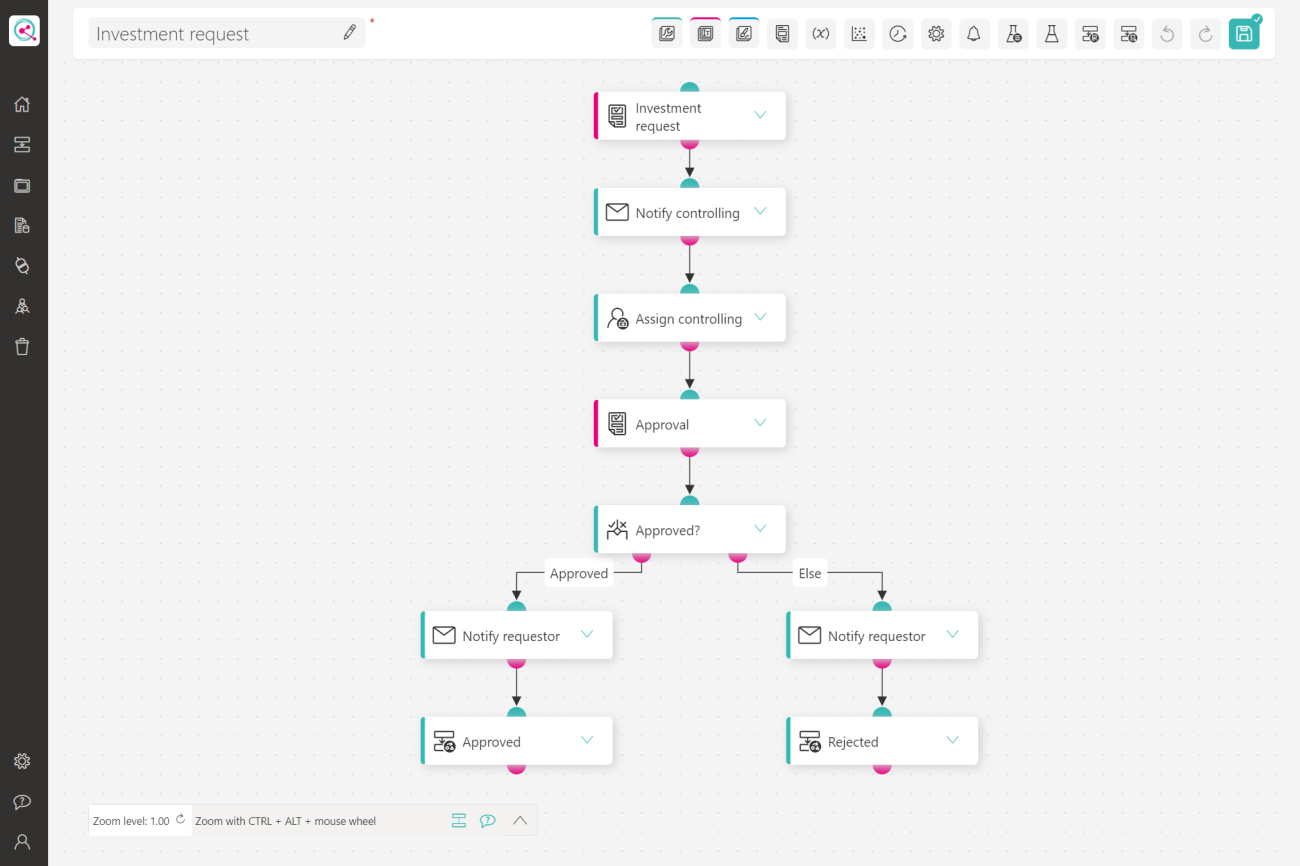With the linqi Process Designer, specialist departments model processes themselves.
Nobody knows their own processes as well as those who are part of them: Employees in the specialist departments. Ideas for digitalization projects or genuine improvements often go unheard or take a long route via the IT department. Most processes only consist of a sequence of recurring tasks such as input, checking and approval steps. These sequences can be easily mapped into automated processes with just a few clicks. By eliminating manual steps and paper-based procedures, an increase in efficiency is quickly achieved for everyone involved. With linqi, specialist departments can map and automate their processes themselves and without programming knowledge.
Process digitization can be achieved independently with just a few clicks. The transformation of manual or paper-based business processes is possible without the use of valuable resources, a lot of time or large financial resources for external consultants.
The linqi process platform has everything you need to simplify the digitization of processes for your business teams and departments. Create powerful workflows with third-party system triggers, conditional steps and more.

Process digitization
Automate simple to complex processes without programming.
Once automated, it runs forever. The linqi process designer makes it possible to implement any process with just a few clicks. It doesn’t matter whether it’s classic employee processes such as digital procurement requests, vacation requests, travel expense reports or damage reports. Complex processes such as inspections, acceptances or development processes with many participants can also be implemented. linqi’s no-code approach makes it possible to drive digitalization throughout the company. By digitizing and automating repetitive processes, you can free up time for your core activities.
Without clear transparency in processes, it becomes difficult to implement organizational strategies effectively. With linqi, you can model processes visually, structure your daily tasks and optimize workflows – so you can achieve your goals faster and more efficiently.
- Minimize sources of error.
- Standardize processes.
- Promote collaboration.
- Avoid media disruptions.
- Easily connect third-party systems.
- Citizen developers through no-code.
Frequently asked questions and answers about the Process Designer
To what extent can workflows be automated?
linqi enables the automation of processes on almost any scale. From very simple processes to complex, company-wide workflows.
Does the engine offer a simple way to define and model processes?
Once processes have been created in the linqi Process Designer, complete BPMN 2.0 documentation can be created automatically with a single click. A linqi process skeleton can also be created from BPMN 2.0 documentation.
Can the process designer be easily adapted to specific business requirements?
Thanks to the no-code approach, specialist departments can be implemented quickly and at any time without waiting times or dependencies on third parties.
Why is process digitization important?
Process digitization offers a number of advantages. Basically, digital processes create scope to use the working time of those involved in the process sensibly, to increase productivity and, above all, to reduce errors in processes. By assigning responsibilities to process owners in specialist departments, the entire company can be digitized more quickly, as the topic is not distributed to individuals, but the entire company deals with digitization. This leads to many synergy effects throughout the entire organization.
How do I make the processes accessible to employees?
The linqi process platform offers a variety of ways to make digitized processes accessible to employees. Either via dashboards or process maps. There are no system limits, as start links can also be integrated into third-party systems or processes can be started via QR codes.
What are the advantages of a no-code platform?
The time required to digitize a process is drastically reduced. The person responsible for the process can concentrate on the logic of the process and is not held up by complex programming or design tasks. The processes are made available digitally with just a few clicks.

